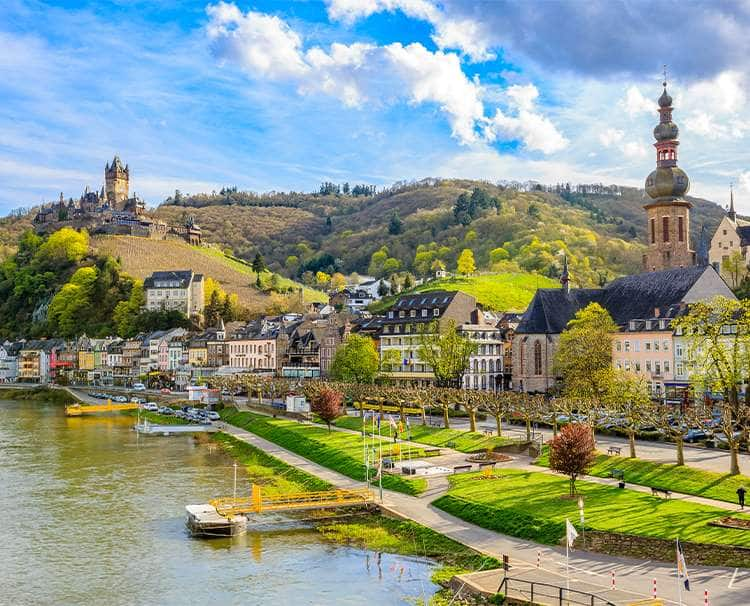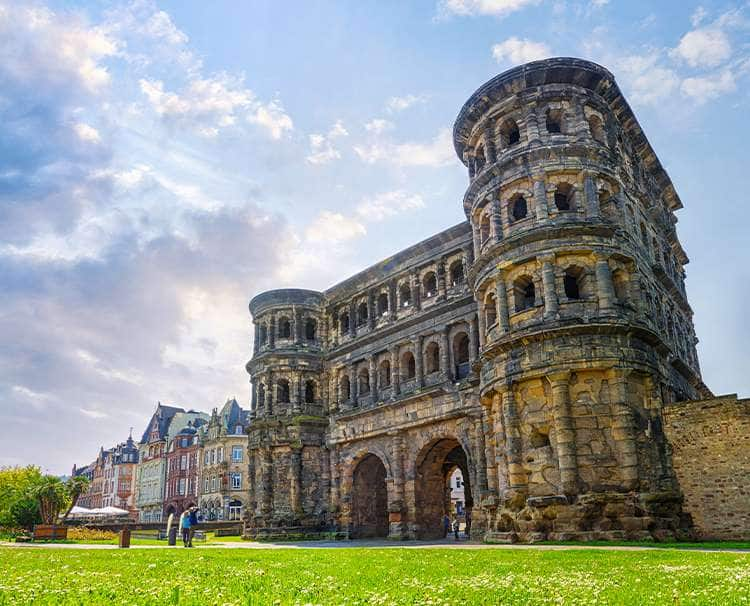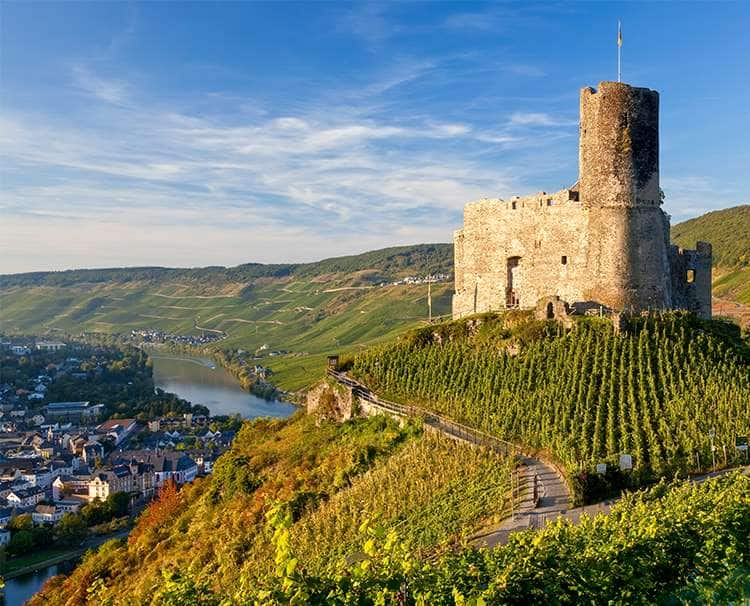This off-shoot of the Rhine, fringed with sloping green hills, quaint villages, striking chapels and more than a dozen castles dating as far back as the 11th century, is a destination in itself. In fact, AmaWaterways Co-Founder and the "Godfather of River Cruising," Rudi Schreiner, has often named this river one of his favorites to cruise. We invite you aboard our itineraries on the Moselle, including Europe’s Rivers & Castles and Vineyards of the Rhine & Moselle, to experience this stunningly picturesque river on our luxurious river cruise ships.
Straight Out of a Fairytale
With half-timbered storybook homes dotting unspoiled landscapes swathed in lush vineyards, the romantic Moselle Valley feels as though it has sprung to life from the pages of your favorite fairytales. Step onto your ship’s spacious Sun Deck and capture postcard-perfect photographs while gliding along tranquil waters through the Moselle Valley where the river cuts through the earth in its most dramatic bends.

One of the fairytale destinations that lies within the Moselle River Valley is Cochem, Germany. Like many of the towns along the Moselle, the medieval town sits beneath a castle, which silhouettes the sky with its cone roof and spired tower. The town features an array of pastel gabled houses, shops and cafes that kiss the Moselle riverside. Looming on the hill above, Reichsburg Castle is one of the most majestic on the Moselle. Its many splendid rooms are fitted with Renaissance and Baroque furniture collected by the Ravenés family. The surrounding views of the Moselle Valley are as inspiring as the castle itself. Visit this town and its castle for yourself on many of our Moselle itineraries, such as our 7-night Vineyards of the Rhine & Moselle cruise.
Germany’s Oldest City

Founded by Romans in 16 B.C., Trier is a veritable treasure trove of UNESCO-designated Roman ruins that include the Roman Bridge, the oldest bridge in Germany dating back to the 2nd century; the Imperial Baths with their fascinating underground tunnels; and the visually impressive Porta Nigra, a remarkably preserved Roman city gate that welcomes visitors to experience its ancient stonework and stunning design. Trier also boasts two UNESCO-designated churches—St. Peter’s Cathedral, the oldest in Germany, and Liebfrauenkirche, a Gothic church with a rose-shaped interior.
On our 10-night Rhine & Moselle Delights itinerary, you can choose to explore Trier’s many Roman relics with our “Rome of the North” or “Secrets of Porta Nigra” tours. You may also opt for a different vantage point of this historic city by exploring it on either a guided biking tour through the city center and along the Moselle or a guided hike to Petrisberg where you can marvel at the city from above.
Some of the Best Wines in Germany

For many, Germany conjures images of Oktoberfest and thus, beer is often the first spirit that comes to mind. However, the Moselle Valley has been a winegrowing region for more than 2,000 years, when the ancient Romans commenced this time-honored tradition.
Unlike other wine regions, the Moselle is unique in that many of its vineyards grow at sharp angles—in fact, the world’s steepest vineyard is in the Moselle Valley! The climate and hills also lend themselves to periods of intense fog that produce “noble rot,” a strangely beneficial fungus that creeps onto grapes and results in sweeter wines, including much-lauded German Rieslings.
On our Europe’s Rivers & Castles Wine Cruise from Luxembourg to Nuremberg, you can sample the delectable wines from this region on our Bernkastel walking tour. After strolling through the quaint town of Bernkastel, you will visit the Bergweiler Winery, where you can walk amongst the Riesling vines, which account for more than half of the grapes planted along the Moselle River, and taste a variety of Bergweiler’s wines.
The Moselle River makes an undeniable impact on all who journey upon it. More than just an offshoot of the Rhine, the majesty and beauty of the Moselle River region is an experience unto itself.
Contact your preferred travel advisor to reserve your Moselle River cruise.
![]()